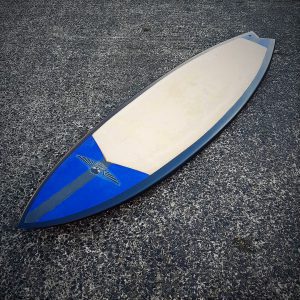How are Surfboards Constructed
Surfboard construction has evolved significantly over the years, driven by advancements in materials, technology, and design techniques. In the early days of surfing, boards were crafted from solid wood, making them heavy and cumbersome. As the sport grew in popularity, manufacturers began experimenting with lighter materials like foam and fiberglass, leading to the modern surfboard as we know it today. Innovations such as epoxy resins, carbon fiber reinforcements, and 3D shaping technology have further refined board performance, providing surfers with better speed, maneuverability, and durability. The evolution of surfboard construction mirrors the dynamic nature of the sport itself, continually pushing the boundaries of what is possible on the waves.
Types of Surfboard Construction
There are several types of surfboard construction, each offering unique performance characteristics. Traditional polyurethane (PU) boards, with their foam core wrapped in fiberglass, provide a classic feel and are favored for their responsiveness. Epoxy boards, built with a polystyrene foam core and epoxy resin, are lighter, more durable, and offer better buoyancy. In addition, there are composite boards that incorporate materials like carbon fiber or bamboo for enhanced strength and flexibility
However one of the most popular way’s to build a board these day’s is the more natural sustainable Eco Surfboard Construction. This uses cloths like Flax or Hemp together with Bio Resins to create a surfboard that delivers on performance but has less of an effect on the Environment We at ND Surfboards do all of the above surfboard constructions, we can offer you not only the Custom surfboard shape but the Custom Constructive you would prefer.
Some construction Products we use
Aerialite
Aerialite fiberglass is a high-performance material commonly used in surfboard construction for its lightweight yet durable properties. Known for its strength-to-weight ratio, Aerialite fiberglass provides excellent rigidity and responsiveness without adding unnecessary weight to the board. This makes it ideal for surfers looking for a balance of performance and durability, as it offers both flexibility and stiffness where needed. With superior resistance to dings and damage, Aerialite fiberglass enhances the longevity of the surfboard while maintaining the sensitivity and control that surfers demand.
Hemp Cloth
Hemp cloth is an eco-friendly material gaining popularity in surfboard construction due to its impressive strength and durability. Known for its natural tensile strength, hemp is stronger than many synthetic fabrics and provides excellent reinforcement without adding excess weight. When used in surfboards, hemp cloth enhances the board’s overall durability while offering a more sustainable alternative to traditional fiberglass. It also offers flexibility and resistance to wear, making it a strong, long-lasting choice for boards designed to withstand the rigors of the ocean. The use of hemp cloth helps reduce the environmental impact of surfboard manufacturing while maintaining high performance.
Innegra cloth
Innegra cloth is a high-performance, fiber-reinforced material known for its exceptional damage resistance and impact strength. When incorporated into surfboards, Innegra significantly enhances their durability by improving resistance to dents, cracks, and other forms of damage that typically occur from impacts with rocks or hard surfaces. Its lightweight and flexible properties allow it to absorb energy from impacts, reducing the likelihood of board breakage. Innegra’s ability to maintain strength while being lighter than traditional fiberglass makes it a popular choice for surfers looking for a resilient yet responsive board.
Carbon Cloth
Carbon construction in surfboards involves using carbon fiber materials to reinforce the board, offering superior strength, stiffness, and lightweight performance. Carbon fiber is incredibly strong yet light, making it ideal for enhancing the board’s responsiveness and maneuverability without adding bulk. The material’s high tensile strength also provides increased durability and resistance to damage, making carbon-infused boards more resilient to impacts. Additionally, carbon construction can improve the overall flex pattern, allowing for greater speed and control, especially in high-performance boards designed for advanced surfers.
Resin Research Epoxy
Resin Research epoxy is highly regarded in the surfboard industry for its exceptional strength, durability, and performance. Known for its superior bonding qualities, it creates a strong, long-lasting finish that resists cracking and yellowing over time. Unlike traditional polyester resins, Resin Research epoxy is lightweight, flexible, and offers increased impact resistance, making it an ideal choice for high-performance boards. Its ability to cure quickly and maintain clarity helps surfers achieve both top-tier durability and aesthetics in their boards, ensuring a smoother ride and greater longevity in various conditions.
